I have long been fascinated by a distictive Anglo Saxon (Anglo/Scandinavian?) brooch in the British Museum.

Known sometimes as "The Sutton Brooch" after the place it was found in a hoard, or more often as "Ædwyn's Brooch" after it's owner mentioned in an inscription on it's back.

The reason I am so interested is that it's manufacture used techniques that I am familiar with but unusually I think it also falls much closer to my skill level than many of the other fine brooches on display.
Let's be clear here, I'm not doubting that it's maker was a skilled metalworker, he must have been to produce the tools he needed to construct such a piece. My contention is that he was more likely to have been a village blacksmith than a specialist jeweller.
There are mistakes on the brooch that a jeweller would not have made even a thousand years ago when this was made. The circles are hand drawn, the designs are all a bit wonky and the bosses have collapsed and folded either in construction or when they were riveted on.
I wanted to recreate it but with a difference, as if the original craftsman had learned from his mistakes and had another go at it.
Using the same techniques and tools, starting from the same basic design and themes I decided to tidy it up a bit and make some of the more vague elements more distinctive. This would also prevent the final piece being an exact clone of the original, which can be a problem in living history events, with several people walking around with the same artefacts that would originally have been unique.
I did some of the preparation work in the days before an event last weekend at Whitby Abbey. Sadly my eyesight is failing as I get older and I obviously cannot work in a living history display wearing glasses. Guidelines for the new design were scratched onto the silver with a pin and I prepared the bosses, soldered in the pins for riveting and then filled the backs with pitch to prevent them from collapsing.
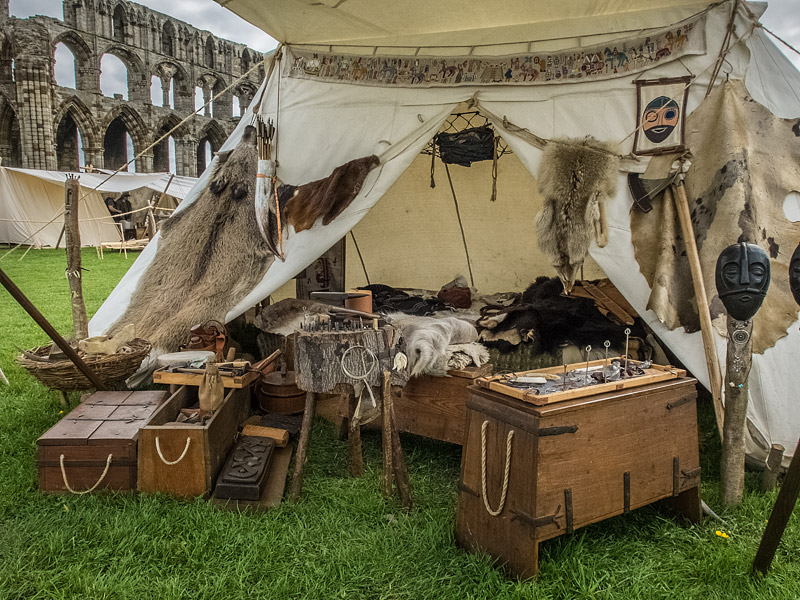
This was my working environment, with many other tents and displays around me and the public would be present too which of course tends to slow work down.
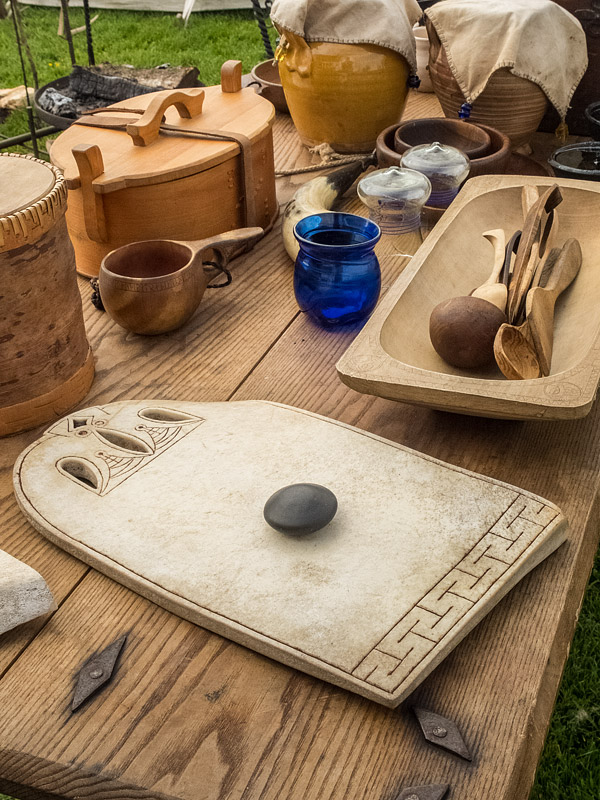
We sleep and eat on the the Living History Exhibit too so there is something a bit "Bushcrafty" about these events I suppose.
Anyway, to cut to the chase, this is what I ended up with.
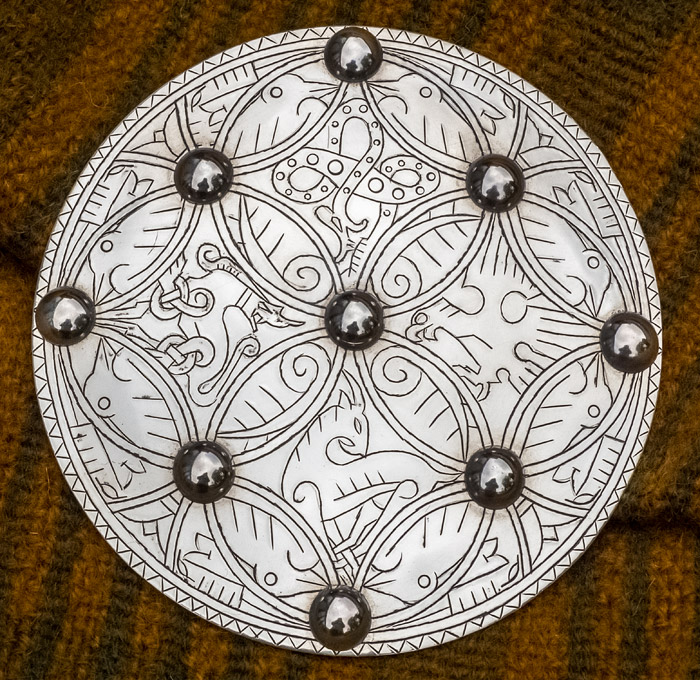
Not completely free from mistakes, I'm not that much better than the original craftsman but I'm quite happy with the result. I've called it "The Whitby Brooch" after the place where most of the work was done and I'm sure I'll never make another like it. The price of silver has trebled since I bought the materials for this and to give you some idea of scale it's about 6" in diameter like the original. This would have been a very prestigious piece back then.
Devil's own job to photograph though, the smutty bits are smears of the polishing compound I used and the bosses of course catch everything in their reflections.
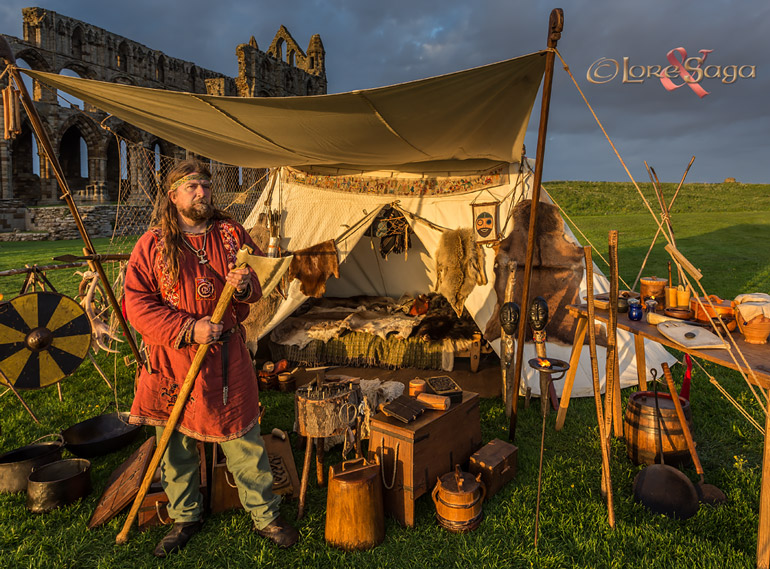
I also took a couple of shots for my website after the event on the last night.
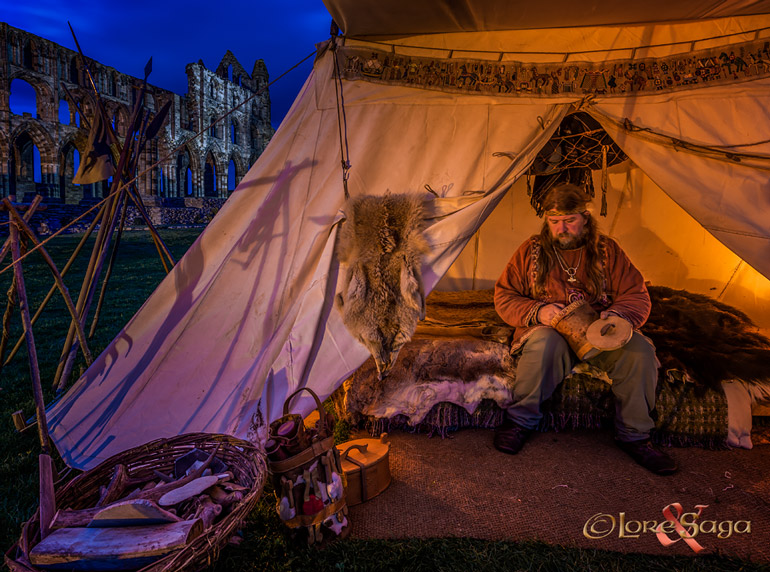
Most people had packed up and left by this stage so I had the place almost to myself which is nice.
Well, I thought some of you might be interested so there you are. I'm starting to get a bit more time for living history events now so my projects list is growing again. You might see a few more things like this as time goes on.

Known sometimes as "The Sutton Brooch" after the place it was found in a hoard, or more often as "Ædwyn's Brooch" after it's owner mentioned in an inscription on it's back.

The reason I am so interested is that it's manufacture used techniques that I am familiar with but unusually I think it also falls much closer to my skill level than many of the other fine brooches on display.
Let's be clear here, I'm not doubting that it's maker was a skilled metalworker, he must have been to produce the tools he needed to construct such a piece. My contention is that he was more likely to have been a village blacksmith than a specialist jeweller.
There are mistakes on the brooch that a jeweller would not have made even a thousand years ago when this was made. The circles are hand drawn, the designs are all a bit wonky and the bosses have collapsed and folded either in construction or when they were riveted on.
I wanted to recreate it but with a difference, as if the original craftsman had learned from his mistakes and had another go at it.
Using the same techniques and tools, starting from the same basic design and themes I decided to tidy it up a bit and make some of the more vague elements more distinctive. This would also prevent the final piece being an exact clone of the original, which can be a problem in living history events, with several people walking around with the same artefacts that would originally have been unique.
I did some of the preparation work in the days before an event last weekend at Whitby Abbey. Sadly my eyesight is failing as I get older and I obviously cannot work in a living history display wearing glasses. Guidelines for the new design were scratched onto the silver with a pin and I prepared the bosses, soldered in the pins for riveting and then filled the backs with pitch to prevent them from collapsing.

This was my working environment, with many other tents and displays around me and the public would be present too which of course tends to slow work down.

We sleep and eat on the the Living History Exhibit too so there is something a bit "Bushcrafty" about these events I suppose.
Anyway, to cut to the chase, this is what I ended up with.

Not completely free from mistakes, I'm not that much better than the original craftsman but I'm quite happy with the result. I've called it "The Whitby Brooch" after the place where most of the work was done and I'm sure I'll never make another like it. The price of silver has trebled since I bought the materials for this and to give you some idea of scale it's about 6" in diameter like the original. This would have been a very prestigious piece back then.
Devil's own job to photograph though, the smutty bits are smears of the polishing compound I used and the bosses of course catch everything in their reflections.

I also took a couple of shots for my website after the event on the last night.

Most people had packed up and left by this stage so I had the place almost to myself which is nice.
Well, I thought some of you might be interested so there you are. I'm starting to get a bit more time for living history events now so my projects list is growing again. You might see a few more things like this as time goes on.


